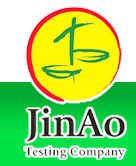1. Plasma Treatment
Method:
Plasma treatment uses ionized gas (e.g., oxygen, nitrogen) to etch or functionalize the polyester surface at a nanoscale level. This process introduces polar groups (e.g., -OH, -COOH) to improve wettability and adhesion.
Fashion Applications:
-
Enhanced Dyeability: Plasma-treated polyester absorbs dyes more efficiently, enabling vibrant colors and reducing water/chemical usage in dyeing—ideal for bold, eco-conscious prints.
-
Hydrophilic Finishes: Modified sportswear fabrics wick moisture better, improving comfort in activewear and summer apparel.
2. Chemical Etching (Alkali Hydrolysis)
Method:
Polyester fibers are treated with alkaline solutions (e.g., NaOH) to hydrolyze ester bonds, creating micro-pits on the surface. This increases roughness and porosity.
Fashion Applications:
-
Silky Hand Feel: Etched polyester mimics the drape and softness of silk, used in luxury eveningwear or lingerie.
-
Eco-Friendly Textures: Combined with recycled polyester, it creates sustainable fabrics with a natural fiber-like appearance.
3. Graft Copolymerization
Method:
Functional monomers (e.g., acrylic acid, chitosan) are grafted onto polyester surfaces via chemical or radiation-induced polymerization. This adds new properties like antimicrobial or antistatic capabilities.
Fashion Applications:
-
Antimicrobial Activewear: Gymwear or athleisure fabrics resist odor-causing bacteria, aligning with hygiene-focused trends.
-
Antistatic Linings: Modified polyester linings in tailored suits reduce static cling, enhancing comfort in formalwear.
4. Nanocoating
Method:
Nanoparticles (e.g., TiO₂, ZnO, or silica) are applied to the fiber surface through sol-gel techniques or spray coating, imparting functionalities like UV resistance or water repellency.
Fashion Applications:
-
Water-Repellent Outerwear: Nanocoated polyester jackets mimic high-end technical fabrics (e.g., GORE-TEX) for urban rainwear.
-
UV-Blocking Beachwear: Swimwear and resortwear with TiO₂ coatings protect against sun exposure while maintaining lightweight aesthetics.
5. Bio-Based Enzymatic Treatment
Method:
Enzymes (e.g., lipases, esterases) selectively break down polyester surface chains, creating biodegradable or hydrophilic regions.
Fashion Applications:
-
Eco-Dyeable Collections: Enzymatic pretreatment allows low-temperature dyeing with natural dyes, appealing to sustainable luxury brands.
-
Biodegradable Accents: Partially degraded polyester blends with natural fibers for compostable trims or temporary fashion pieces.
6. Metallization (Sputtering/Vacuum Deposition)
Method:
Thin metal layers (e.g., aluminum, copper) are deposited onto polyester surfaces using vacuum technology, creating conductive or reflective finishes.
Fashion Applications:
-
Metallic Eveningwear: Shimmering dresses or futuristic accessories with lightweight, flexible metallic polyester fabrics.
-
Smart Clothing: Conductive layers enable integration with wearable tech (e.g., heated jackets, LED-embedded garments).
7. Laser Surface Patterning
Method:
Lasers selectively ablate the polyester surface to create micro-patterns, altering texture or optical properties without chemicals.
Fashion Applications:
-
Custom Denim Effects: Laser-etched polyester blends replicate distressed denim looks without water-intensive processes.
-
Iridescent Finishes: Micro-gratings diffract light for holographic textures in avant-garde runway designs.
Conclusion
Surface modification transforms polyester from a basic synthetic fiber into a versatile, high-performance material for fashion. By integrating technologies like plasma, nanocoatings, or enzymatic treatments, designers can achieve eco-friendly dyeing, smart functionalities, and luxury aesthetics. As sustainability and innovation drive the industry, modified polyester fabrics will continue to bridge the gap between fast fashion and circular, tech-forward design—enabling everything from biodegradable haute couture to IoT-ready urbanwear.
Source: Textile Fabric Knowledge


















